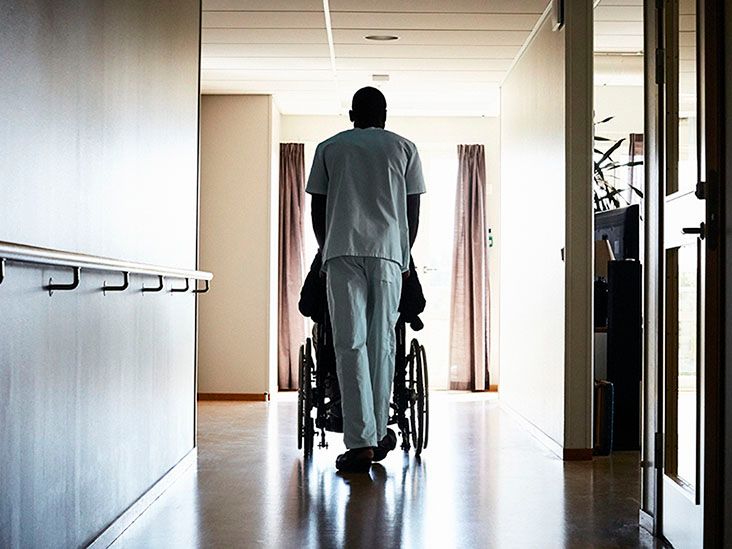You've probably been there - standing in the middle of your living room, taking a step forward, and suddenly feeling that tiny moment of uncertainty. Maybe it's just when you're tired, or perhaps it's gotten worse over time. That's when you start wondering: should I be using a cane? Or would a walker make more sense?
The truth is, choosing between walkers vs canes isn't as straightforward as you might think. It's not about what looks better or what your neighbor uses - it's about understanding your body, your daily routine, and figuring out what kind of support you actually need.
So let's cut through the confusion together. We're going to explore when each option works best, what types are available, and how to pick the one that's going to help you move through your day with confidence and safety.
What Each Tool Does Best
Let's start with the basics. Canes and walkers are both mobility aids, but they serve very different purposes.
Think of a cane like a trusty sidekick - it's there to help shift some weight off one leg, give you a bit more balance, and add that extra bit of stability when you need it. But here's the thing about canes: they're only meant to take about 25% of your body weight. That's like having a friend hold up one corner of a wobbly table - helpful, but not the whole solution.
Walkers, on the other hand, are more like your personal fortress on wheels. They're designed to handle 50% or more of your body weight, which is a significant difference. If you're dealing with serious balance issues, bilateral weakness (that means weakness in both legs), or you can't put weight on one leg at all, a walker might be what you need according to AARP research.
I remember talking to my friend Sarah after her knee surgery. She was convinced she needed a walker because she felt so unstable. But after working with her physical therapist, they realized a simple offset cane was actually perfect for her recovery stage. The key is matching the tool to your specific situation.
Factors That Influence Your Choice
So how do you know which one is right for you? Let's break down the main reasons people need mobility support:
First, there are weight-bearing issues. This includes things like joint pain, weakness in one or both legs, or recovery from surgery. If you're dealing with something like a hip replacement, you might need to keep weight off that leg entirely - and that's where walkers really shine.
Then there are balance challenges. Maybe you experience dizziness, have numbness in your feet, or your vision isn't what it used to be. These issues can make even a short walk across the room feel like navigating a tightrope.
Finally, there are endurance limitations. Conditions like COPD or congestive heart failure can leave you feeling winded after just a few steps. Sometimes it's not about balance or strength - it's about having the energy to get where you're going.
| Issue Type | Canes Work? | Walkers Work? |
|---|---|---|
| Mild hip/knee pain | Yes | Optional |
| Severe balance issues | No | Yes |
| Trouble walking long distances | Maybe | Yes |
| Bilateral weakness | Not ideal | Best Option |
Here's something that might surprise you: according to HealthInAging.org, about 70% of people use their canes incorrectly. That's a huge number! It shows how important it is to get proper guidance rather than just guessing.
Different Types of Canes Explained
Not all canes are created equal. There are several types, each designed for different needs:
Standard canes are what most people think of - a single stick with a curved handle. These work well for mild balance issues or minor leg weakness. They're portable, affordable, and pretty discreet. But they're also less stable than other options, and it's easy to get the height wrong.
Offset canes have those handles that look more like a question mark. This design is actually more ergonomic because it better transmits your weight vertically down the shaft. If you've ever felt wrist or hand pain with a regular cane, an offset version might be much more comfortable.
Quad canes - the ones with four legs at the bottom - offer the most stability. That wider base means better support when you're standing still. They're particularly helpful for people with significant balance issues, like those recovering from a stroke or dealing with neuropathy. But they are heavier and require a slower walking pace, so they're not right for everyone.
I worked with a client named Robert who had diabetes-related neuropathy. He was terrified of falling, and his regular cane just wasn't giving him enough confidence. When we switched him to a quad cane, you could see the relief on his face immediately. It was like he'd found his missing security blanket.
Understanding Walker Options
Walkers come in several varieties too, and choosing the right one can make a huge difference in your daily life.
Standard walkers - the ones without wheels - are the most stable option for indoor use. They require you to lift them after every step, which might sound tiring, but it gives you precise control over your movement. These are perfect when you need to keep full weight off a leg.
Front-wheeled walkers have two wheels in the front and two stabilizers in the back. They're easier to move than standard walkers since you don't have to lift them completely, but they still offer good stability. The trade-off is they don't handle uneven surfaces very well.
Rollators are basically the luxury cars of the walker world. They have four wheels, a seat, and brakes. If you have endurance issues or heart/lung conditions, that built-in resting spot can be a game-changer. They're also great for longer walks outside, as long as you're sticking to paved surfaces.
Four-wheel walkers are the heavy-duty option, perfect for city dwellers dealing with cracked sidewalks or anyone who needs to navigate rougher terrain. But they're not ideal for people with conditions like Parkinson's that affect postural control.
| Feature | Standard Walker | Front Wheels | Rollator |
|---|---|---|---|
| Supports 50%+ weight | |||
| Requires lifting | |||
| Indoor use | Good | Great | Average |
| Steep terrain | Poor | Poor | Better |
| Seat available | |||
| Brake required? |
My neighbor Margaret was convinced she needed the fanciest rollator with all the bells and whistles. But after trying different options, we realized her small apartment actually worked better with a front-wheeled walker - it was just as stable but much more maneuverable in tight spaces.
Getting the Perfect Fit
Here's something crucial that a lot of people overlook: proper sizing. A mobility aid that's too tall or too short can actually cause more problems than it solves.
The general rule is that when you're standing upright with your arms hanging naturally at your sides, the handle of your cane or walker should line up with your wrist. Your elbows should have a slight bend - about 10 to 30 degrees - when you're holding the handle.
Dr. Yourman from UCSD puts it perfectly: "A cane too high causes neck strain; one too low leads to slouching." That's not just uncomfortable - it can lead to back pain and poor posture over time.
When you start using any mobility aid, don't just jump right into your normal walking routine. Start with short walks in straight lines. Practice that coordination between your foot and your aid. It takes time to develop that rhythm, and that's completely normal.
When to Make the Switch
Here's something important to remember: your needs can change over time. You don't have to stick with the same mobility aid forever.
After surgery, most people start with a walker and gradually transition to a cane as they heal and regain strength. For example, someone recovering from hip replacement might use a walker for 2-4 weeks, then switch to a cane as their mobility improves.
The key is paying attention to your body and working with professionals who understand your situation. As your muscles strengthen and your balance improves, you might find you need less support. Or conversely, if you're experiencing more fatigue or new challenges, you might need to step up to a more supportive option.
Physical therapist Dr. Katie Wadland puts it beautifully: "We are movement experts; our job is to help you navigate your environment safely." Don't hesitate to reach out to professionals who can guide you through these transitions.
I remember working with a woman named Linda who had been using a cane for years after a minor knee injury. But as she got older and started experiencing more balance issues, we realized she actually needed to step up to a rollator. She was initially embarrassed about the "upgrade" but quickly realized it gave her so much more confidence and independence.
The Human Side of Mobility Aids
Let's talk about something that doesn't get enough attention: the emotional side of using mobility aids. It's not just about physical support - there's a whole psychological component too.
Some people feel self-conscious using mobility aids, worried about what others might think. Others prefer something less "medical" looking. I've had clients who chose lighter, more stylish canes because they felt it better matched their personality.
Think about your lifestyle too. If you're someone who travels frequently or has a busy social life, you might prioritize portability over maximum support. Convenience sometimes trumps perfect support, and that's okay as long as you're making informed choices.
The Healthy Aging PT blog notes that a lot of social isolation stems from people being uncomfortable with mobility aids. But here's my take: the most confident thing you can do is use whatever tool helps you live your best life. Independence isn't about doing everything the hard way - it's about doing what works for you.
Making Your Decision
So how do you actually decide between walkers vs canes? It comes down to understanding your specific needs, not just picking what seems easiest.
Are you mostly moving around indoors? Dealing with serious balance issues? Walking long distances? The answers to these questions will point you in the right direction. The best walkers for seniors are only truly helpful when they match the person using them.
Here's my advice: talk to a health professional, ideally a physical therapist who can assess your specific situation. Try different devices if possible. Be honest about what feels right for you - not what your insurance company approves or what worked for your friend.
Don't be afraid to experiment a bit. Maybe a cane works great in the morning when you're fresh, but you need a rollator in the evening when fatigue sets in. Mobility is about adapting to your body's changing needs throughout the day.
Think about how you actually live your life. Where do you spend most of your time? What activities matter most to you? The right mobility aid is the one that helps you keep doing the things that make life meaningful.
Remember, using a mobility aid isn't about giving up independence - it's about taking control of your safety and mobility. Whether you choose a simple cane or a full-featured walker, you're making a smart choice to stay active and engaged in your daily life.
The most important thing? Don't let uncertainty keep you from moving forward. Take that first step - literally and figuratively - toward finding the support that works for you.
FAQs
What is the main difference between walkers and canes?
Walkers provide more support, handling up to 50% of your body weight, while canes are best for mild balance or leg support, taking about 25% of your weight.
Who should use a walker instead of a cane?
People with serious balance issues, bilateral leg weakness, or those who can’t put weight on one leg often benefit more from a walker.
Are there different types of canes for specific needs?
Yes, from standard canes for light support to quad canes for better stability, each type is designed for different mobility challenges.
Can I switch from a walker to a cane over time?
Yes, many people transition from a walker to a cane as their strength and balance improve, especially after surgery or injury recovery.
How do I know if my mobility aid is the right size?
Your mobility aid is properly fitted when the handle aligns with your wrist and your elbow bends slightly (10–30 degrees) when holding it.
Disclaimer: This article is for informational purposes only and does not constitute medical advice. Always consult with a healthcare professional before starting any new treatment regimen.
Related Coverage
Use this turning 65 checklist to prepare for retirement with confidence. Cover Social Security, Medicare, finances, and more....
Stay safe with medication safety for seniors. Get practical tips to manage prescriptions, avoid interactions, and protect your health....
Learn which foods to avoid in older age to maintain health, prevent illness, and boost energy as you age....
Finding the right Medicare plan for parents doesn't have to be confusing. Get clear guidance on coverage options and make an informed choice....
When a loved one passes, Medicare after death stops immediately, but prior claims can still be filed. Learn how bills are handled....
Get clear guidance on Medicare Part B enrollment, including eligibility, costs, and how to avoid late penalties....
Find the best Medicare in Missouri options for your needs. Compare plans, costs, and coverage to make confident healthcare choices....
Find out exactly what Medicare respite care covers, who qualifies, costs, and step‑by‑step ways to arrange it for your loved one....
Studies show human deaths follow circadian rhythms with most occurring early mornings around 6 am. Understanding why this happens and death's stages may ease fear....
Most people don't eat enough fruits and vegetables daily. Learn simple ways to add more produce through meal planning, snacking, and overcoming obstacles to reap nutrition benefits....









